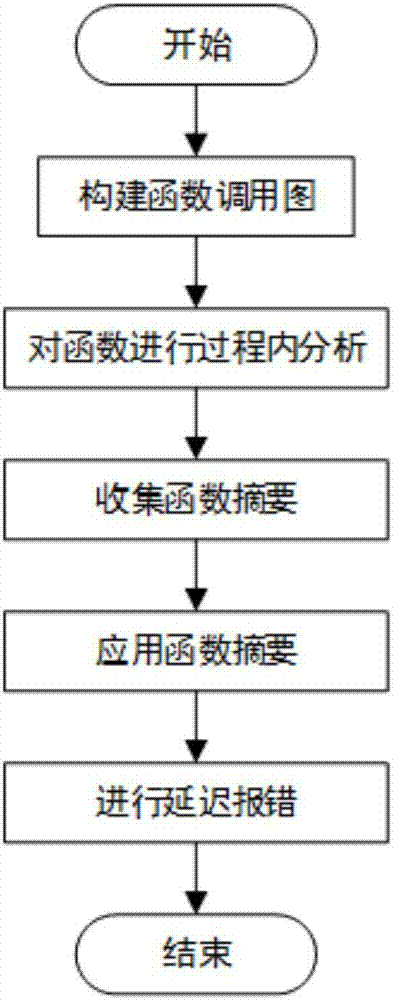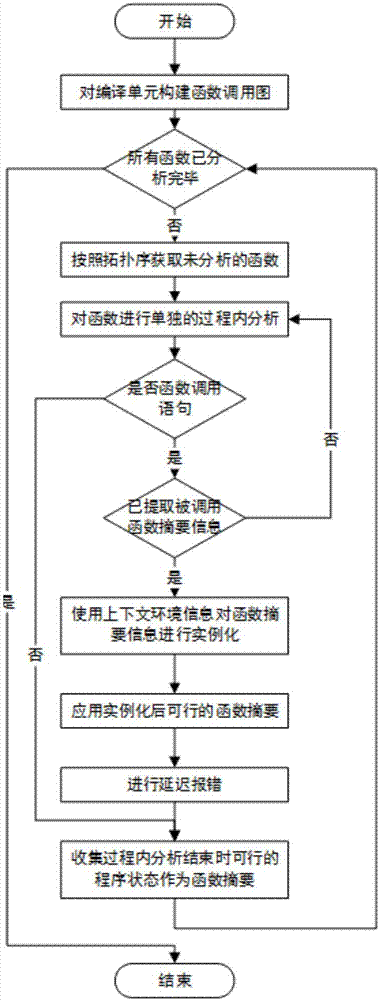State-based path-sensitive symbolization function digest algorithm
A technology of function abstraction and symbolization, applied in the field of program analysis, it can solve the problems of inability to achieve context sensitivity, low analysis precision, and high false negative rate, and achieve the effects of easy instantiation, concise summary information, and good scalability.
- Summary
- Abstract
- Description
- Claims
- Application Information
AI Technical Summary
Problems solved by technology
Method used
Image
Examples
Embodiment 1
[0048] refer to figure 1 , a state-based path-sensitive symbolic function summarization algorithm, roughly divided into 5 parts. In the stage of constructing the function call graph, the source code is first compiled. During the compilation process, the function call graph (CallGraph) is constructed. Finally, the functions in the graph are analyzed in sequence using symbolic execution technology according to the topological order. In the intra-procedural analysis stage, first construct the function control flow graph, and then use the queuing algorithm to perform symbolic execution on the elements in the CFG. During the symbolic execution process, report errors that can be determined and report information that cannot be reported depending on the context. Record. In the function summary collection stage, when a function return statement is encountered, the symbolized program state is used as a function summary, and path conditions are stored into the program state. In the ap...
PUM
 Login to View More
Login to View More Abstract
Description
Claims
Application Information
 Login to View More
Login to View More - R&D
- Intellectual Property
- Life Sciences
- Materials
- Tech Scout
- Unparalleled Data Quality
- Higher Quality Content
- 60% Fewer Hallucinations
Browse by: Latest US Patents, China's latest patents, Technical Efficacy Thesaurus, Application Domain, Technology Topic, Popular Technical Reports.
© 2025 PatSnap. All rights reserved.Legal|Privacy policy|Modern Slavery Act Transparency Statement|Sitemap|About US| Contact US: help@patsnap.com


